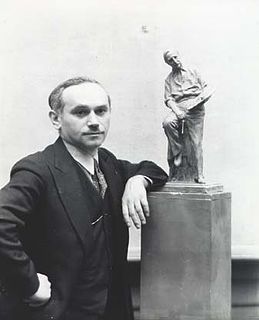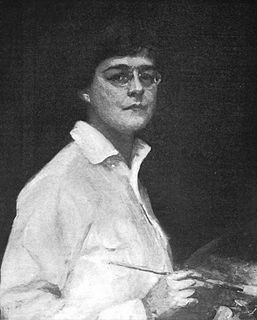
Sir William Blackstone was an English jurist, judge and Tory politician of the eighteenth century. He is most noted for writing the Commentaries on the Laws of England. Born into a middle-class family in London, Blackstone was educated at Charterhouse School before matriculating at Pembroke College, Oxford in 1738. After switching to and completing a Bachelor of Civil Law degree, he was made a Fellow of All Souls, Oxford on 2 November 1743, admitted to Middle Temple, and called to the Bar there in 1746. Following a slow start to his career as a barrister, Blackstone became heavily involved in university administration, becoming accountant, treasurer and bursar on 28 November 1746 and Senior Bursar in 1750. Blackstone is considered responsible for completing the Codrington Library and Warton Building, and simplifying the complex accounting system used by the college. On 3 July 1753 he formally gave up his practice as a barrister and instead embarked on a series of lectures on English law, the first of their kind. These were massively successful, earning him a total of £453, and led to the publication of An Analysis of the Laws of England in 1756, which repeatedly sold out and was used to preface his later works.

The Commentaries on the Laws of England are an influential 18th-century treatise on the common law of England by Sir William Blackstone, originally published by the Clarendon Press at Oxford, 1765–1770. The work is divided into four volumes, on the rights of persons, the rights of things, of private wrongs and of public wrongs.

Felix Weihs de Weldon was an Austrian-born American sculptor. His most famous pieces include the United States Marine Corps War Memorial in Arlington County, Virginia and the Malaysian National Monument (1966) in Kuala Lumpur.

Charles Allan Grafly, Jr. was an American sculptor and teacher.

James Earle Fraser was an American sculptor during the first half of the 20th century. His work is integral to many of Washington, D.C.'s most iconic structures.

John Quincy Adams Ward was an American sculptor, whose most familiar work is his larger than life-size standing statue of George Washington on the steps of Federal Hall National Memorial in New York City.

There are many outdoor sculptures in Washington, D.C. In addition to the capital's most famous monuments and memorials, many figures recognized as national heroes have been posthumously awarded with his or her own statue in a park or public square. Some figures appear on several statues: Abraham Lincoln, for example, has at least three likenesses, including those at the Lincoln Memorial, in Lincoln Park, and the old Superior Court of the District of Columbia. A number of international figures, such as Mohandas Gandhi, have also been immortalized with statues. The Statue of Freedom is a 19½-foot tall allegorical statue that rests atop the United States Capitol dome.

Paul Wayland Bartlett was an American sculptor working in the Beaux-Arts tradition of heroic realism.
The Piccirilli Brothers were an Italian family of renowned marble carvers and sculptors who carved many of the most significant marble sculptures in the United States, including Daniel Chester French’s colossal Abraham Lincoln (1920) in the Lincoln Memorial, Washington, D.C.

The Merle Reskin Theatre is a performing arts venue located in the Loop community area of Chicago, Illinois. Originally named the Blackstone Theatre and now named after Merle Reskin, it was founded in 1910. The Merle Reskin Theatre is now part of DePaul University, and is also used for events and performances of other groups. It serves as the home of the Chicago Playworks for Families and Young Audiences series produced by The Theatre School of DePaul.

The East Side is a collection of neighborhoods in the eastern part of the city of Providence, Rhode Island. It officially comprises the neighborhoods of Blackstone, Hope, Mount Hope, College Hill, Wayland, and Fox Point.

The city of Providence, Rhode Island has 25 official neighborhoods.
Wilfrid Prest is a historian, specialising in legal history, who is professor emeritus at the University of Adelaide. He is also a Fellow of the Royal Historical Society, the Australian Academy of the Humanities, the Academy of the Social Sciences in Australia, and Queen's College, University of Melbourne, and a member of the Council of the Selden Society, London.
Roman Bronze Works, now operated as Roman Bronze Studios, is a bronze foundry in New York City. Established in 1897 by Riccardo Bertelli, it was the first American foundry to specialize in the lost-wax casting method, and was the country's pre-eminent art foundry during the American Renaissance.

Apotheosis of Democracy is a public artwork by American sculptor Paul Wayland Bartlett, located on the United States Capitol House of Representatives portico's east front in Washington, D.C., United States. This sculpture was surveyed in 1993 as part of the Smithsonian's Save Outdoor Sculpture! program.

Robert Morris is a bronze statue by Paul Wayland Bartlett commemorating American Revolution financier and statesman Robert Morris. It is located at Independence Hall, on 4th Street and Walnut Street, Philadelphia.

Max Kalish was American sculptor born in Valozhyn, Belarus, and best known for his sculptures of laborers.

Harriet Blackstone was an American figure and portrait painter. Many of her subjects were midwestern business leaders and their families she also painted a number of prominent musicians.

Edward Lewis Bartlett is a bronze sculpture depicting the American politician of the same name by Felix W. de Weldon, installed at the United States Capitol in Washington, D.C., as part of the National Statuary Hall Collection. The statue was gifted by the U.S. state of Alaska in 1971.
Paul Bartlett may refer to:
















